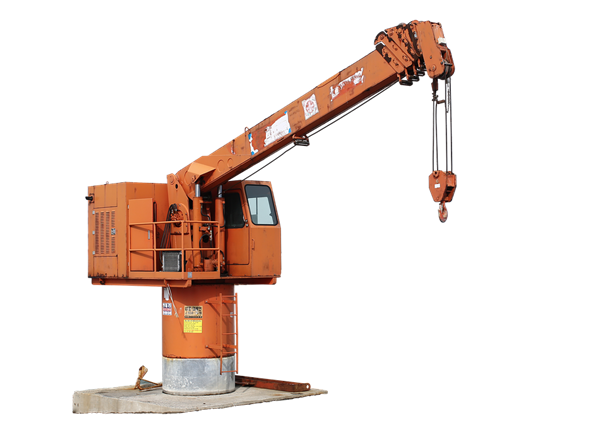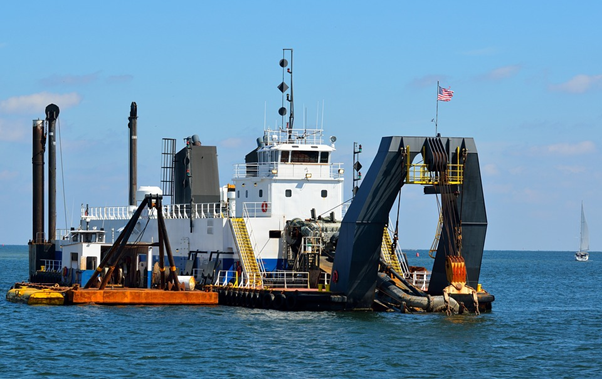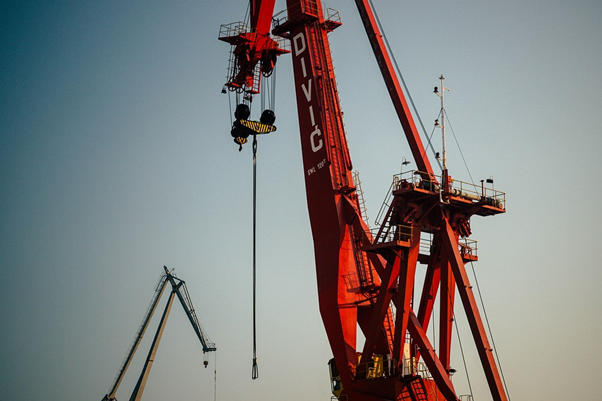Heavy equipment shipping and sales are breaking all records around the world, driven by big-dollar stimulus spending and government investments in massive infrastructures. According to data from Off-Highway Research, around 1.2 million pieces of equipment were sold worldwide in 2021. Given that the construction business is rising worldwide, the surging demand is a good precursor for construction equipment transport to this region at an affordable rate.
There is also an appreciable increase in the sale of used and refurbished machinery in South Africa due to real estate and construction activities. Especially for the Nairobi-Mombasa Highway project in Mombasa and the real-estate and port terminal project in Walvis Bay, Namibia, the need is high for construction machinery. In this article, we’ll discuss how you can ship heavy equipment to Namibia, the requirements and preparation for shipping, and the cost factors to look for
Heavy Equipment Shipping to Namibia: An Introduction

Emerging from the covid-pandemic era, the new and used construction businesses are amidst a high-demand cycle. In Namibia alone, there are multiple factors at play behind the bolstering demand.
The rapidly growing economy of this country is accentuating the need for heavy investments in infrastructure development projects. For instance, an excellent example is an ongoing affordable housing development in Walvis Bay that merges the functional marina with residential and commercial buildings.
Another project involves the strategic expansion of the Port of Walvis Bay’s new container terminal over the course of three years. The development will increase the terminal’s throughput capacity to 1,005,000 TEUs from 355,000 TEUs.
All these developments contribute immensely to the need for construction equipment transport in Namibia.
Types of Construction Equipment Transport to Namibia

There is a variety of construction equipment that shippers send through shipping companies in South Africa, such as:
- Excavators.
- Bulldozers.
- Cranes.
- Wheel loaders.
- Dumpers.
- Bar-bending and cutting machines.
- Concrete-mixers.
- Backhoes.
- Earth rammers and much more.
Available Methods for Construction Equipment Transport to Namibia

There are a handful of ways to ship construction equipment with the help of a shipping company in South Africa. In general, they include RoRo, LoLo, Flat-rack, and container shipping.
RoRo shipping for Construction Equipment Transport
RoRo shipping is a great option for transporting construction equipment due to its cost- efficiency, and speed. But this method is for machinery that is rollable or has wheels.
Your shipping company will use a ramp or hydraulic winch to roll the equipment on the ship’s deck, secure it and roll it off when the ship reaches the Port of Walvis Bay or another port in Namibia. With RoRo, you can ship as much equipment as you want.
Flat-rack for heavy equipment shipping to Namibia
The flat-rack shipping method is perfect for heavy and oversized equipment that cannot fit inside a standard-sized 20ft or 40ft container. A flat rack has an open top with posts and walls covering the ends, enabling the equipment to load from the top or sides.
Once the laborers load the equipment, they will secure it against the flat rack with lashings. Just like containers, flat-racks can stack on top of each other, thus taking less space on a vessel.
LoLo for Construction equipment Transport
The LoLo vessels come with in-built cranes for lifting, loading, and unloading the machinery on the deck. They have ample cargo space, allowing the cranes to load the machinery from the top.
Besides, LoLo is an ideal option for heavy equipment that is difficult to load on a ship with any other shipping method. As the cranes do all the work, there is no need for other operational machinery to handle the construction equipment.
Containers for Heavy Equipment Shipping to Namibia
Construction equipment can be susceptible to damage if transported poorly. Therefore, container shipping can be a suitable method for heavy equipment shipping to Namibia as it provides additional security in the form of an enclosed container. Laborers will load the equipment inside the container with the help of cranes or forklifts.
Your shipping company will offer you two standard-sized 20 and 40-ft container choices. You can choose one according to your requirements and ship as much machinery as you can possibly fit inside it.
However, this method is more expensive than RoRo as it requires you to pay the container rent plus the cost of loading/unloading and labor wages. There are two more options in container shipping. FCL and LCL.
Full Container Load (FCL)
Full Container Load shipping is an ideal method for shipping construction equipment, especially if you have loads of it to transport. It involves leasing the entire container to ship machinery, which makes it costlier than any other shipping method. However, you won’t have to share the container space with any other shipper.
Less than Container Load (LCL)
Less than Container Load shipping is another good option for shipping construction machinery to Namibia. It’s cheaper than FCL, as you’ll share the container rent with other shippers.
But you’ll also have to share the space with them as well. It’s a budget-friendly method if you have less bulky equipment to send and in a limited amount.
Heavy Equipment Shipping to Namibia: The Preparation
Before sending heavy construction machinery to Namibia, consider taking steps to ensure you won’t suffer delays, penalties, or monetary loss. Dismantle your machinery if possible and ship it instead in parts.
Also, empty the equipment of fuel or oil. Other preparations include purchasing marine insurance and documentation for customs clearance.
Customs tax & duty
Namibia has set customs rules and regulations that require you to adhere to them to avoid customs delays or double taxes. These rules are also subject to change, so you must request the current information from the Namibian Embassy in the USA. On average, the duty rates for heavy equipment shipping in Namibia can go up to 45% of its value.
But each piece of equipment may require specific paperwork or incur a different customs duty. Therefore, hire an experienced shipping company to help you with equipment transport and customs clearance.
Documentation for Heavy Equipment Shipping to Namibia
It is important to consult with your shipping company, Namibian Embassy, or customs before preparing paperwork to import construction equipment. The documentation will help you clear customs in both the USA and Namibia.
It is crucial to fill out all forms with the current information and each and every detail of your equipment, including the evidence of its purchase. Otherwise, Namibian customs may not allow the machinery to enter the country. The standard documentation will include the following:
- Bill of Lading.
- Title of Ownership.
- Insurance Certificate.
- Bill of Sales.
- Import Permit.
- Authorization Certificate if required.
Purchasing Marine Insurance
Although buying marine insurance is not obligatory, even a minimum risk will still be a risk. Construction machinery is costly. Therefore, any damage to it during transit can cause you not only a loss of valuable equipment, but you’ll also suffer from monetary loss.
Purchasing marine insurance will ensure that in case of an incident, you’ll be at least able to recover the value of machinery. There are different levels of marine insurance according to your equipment specifications and the complexities involved in transit.
So, you’ll have to ask your shipping company for the most appropriate coverage. The insurance will increase your shipping expenses, but the extra cost is for keeping you stress-free throughout the shipping process.
Factors influencing Heavy Equipment Shipping to Namibia
Several cost variables can affect your construction equipment transport to Namibia. Let’s find out what their influence means for your shipping bill.
Shipping method
The shipping method you’ll choose to transport your construction equipment to Namibia will heavily influence your shipping costs. For instance, if you choose container shipping, it will cost you more because of the labor and container expenses.
These charges will add up to your shipping costs. But if your machinery is rollable or has wheels, you can select RoRo, which will cost you less in transportation expenses.
Equipment size and weight
Your shipping costs will increase or decrease regarding your machinery specifications. If your construction equipment is heavier and larger, especially if it is more than 12 ft in length, it will incur additional charges.
Shipping regulations
While shipping construction equipment to Namibia, check with your shipping company. Many have regulations in place that don’t allow shipment of over 12ft long machinery. So hire one that has experience shipping over 12 ft long equipment. But remember that may come with additional costs.
Reclassification charges
Any unknown issues with your machinery will require it to undergo a reclassification audit, especially if you don’t know its class. The audit will perform according to the NMFC rules and incur extra charges. These costs will add up to your shipping bill.
Storage expenses
You may require storage space in your shipping company’s warehouse if you are unable to pick up your machinery when it reaches the destination port. As long as it remains in the warehouse, you’ll have to pay the rent for the storage space, which will increase your shipping charges.
Peak season
There is a period of time in a year when the demand for shipping overseas is at its peak. The transportation rates are high, and there are fewer shipping options.
Generally, it’s in the last quarter of the year. So, book your shipment at least six months in advance. The first quarter of the year is less busy with less shipping demand, and more shipping options are available at that time.
Construction Equipment Transport and Heavy Equipment Shipping to Namibia: The Bottom Line
The demand to transport construction equipment is rising worldwide, especially in Namibia, where several construction projects are rolling out. A real estate development project and another port terminal extension project, both in Walvis Bay, require the import of heavy construction machinery.
Owing to that fact, shipping equipment to Namibia is more affordable than ever before. However, you’ll have to take the help of a credible shipping company to secure your shipment at a competitive rate. AFL can assist you by booking your shipment at scale, handling your oversized machinery, documentation, and customs clearance.
We can also haul your equipment from your chosen location and drop it at the port. All the while, you won’t have to lift a finger as we’ll take care of everything.
Our experts will handle the loading/unloading and transit process and can drop the equipment at your desired destination in Namibia. Book your construction equipment shipment today!
Construction Equipment Transport and Heavy Equipment Shipping to Namibia: Frequently Asked Questions
How much time will it take to transport construction equipment to Namibia?
Factors such as weather, peak season, and your chosen shipment method will determine the time it will take for your shipment to reach Namibia. If you factor in the potential strikes, holidays, and customs clearance caused delays, your load can take more time to reach you.
But on average, it will take three to four weeks for you to receive your construction machinery. In a worst-case scenario, it can take up to six weeks.
How much time will it cost to ship heavy machinery to Namibia?
Several factors can cause a surge in the shipping rates, from the shipment method you choose to the pickup service you hire and peak season. If you require warehouse storage, its rent will add to your shipping bill.
Cost variables like reclassification charges, size and weight of your machinery, and customs tariffs can also increase your shipping costs. In addition, it will incur additional fees if you require a pick-up or delivery service for your construction equipment.